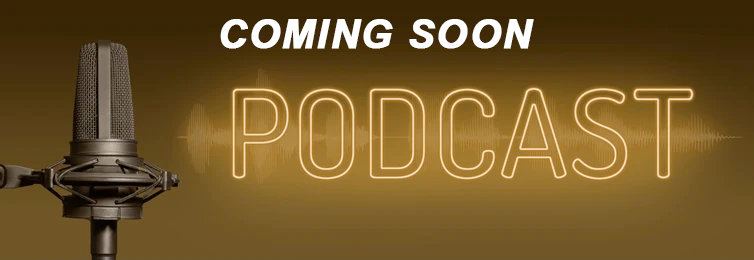
Should cities open drug “safe havens” where people who are addicted to illegal drugs can use them under the supervision of medical professionals?
Introduction to the concept of safe havens for drug use
Welcome to our thought-provoking blog post where we dive into a controversial topic that has been making headlines across the country: drug “safe havens.” Picture this – cities opening designated spaces where individuals struggling with drug addiction can use illegal substances under the watchful eye of medical professionals. It’s an unconventional idea that sparks heated debates and polarizing opinions. Are these safe havens a revolutionary approach to tackling drug addiction or simply enabling harmful behavior? In this article, we’ll explore both sides of the argument, dissecting the legal issues, examining real-life examples, and discussing alternative solutions. Brace yourself for a stimulating discussion on this hot-button issue!
The current state of drug addiction and overdoses in cities across the country
The current state of drug addiction and overdoses in cities across the country is a serious and pressing issue that cannot be ignored. Addiction knows no boundaries, affecting people from all walks of life, regardless of age, race, or socioeconomic status. It has become an epidemic within our society, tearing families apart and devastating communities.
In recent years, there has been a significant increase in drug-related overdoses across many cities nationwide. The widespread availability of powerful opioids such as fentanyl has only exacerbated this crisis. These drugs are incredibly potent and can easily lead to fatal consequences if not used with caution.
Cities have seen a rise in overdose deaths due to the contamination of illicit substances with synthetic opioids like fentanyl. This lethal combination poses a significant threat to individuals who may not even realize they are consuming these dangerous substances.
It is important to recognize that addiction is not simply a choice but rather a complex medical condition that requires comprehensive treatment and support. Many individuals suffering from addiction face numerous barriers when seeking help, including stigma, limited resources, and lack of access to appropriate care.
Efforts to combat drug addiction have primarily focused on law enforcement measures aimed at reducing supply and punishing those involved in the drug trade. However, it is becoming increasingly clear that this approach alone is insufficient. We need alternative strategies that prioritize harm reduction and public health approaches.
One potential solution gaining traction is the concept of safe havens for drug use under medical supervision. While controversial for some, these facilities aim to provide a controlled environment where individuals can consume illegal drugs without fear of arrest or overdose death while also offering access to healthcare professionals who can offer guidance on safer practices or connect users with treatment options if desired.
Proponents argue that safe havens reduce overdose fatalities by ensuring immediate medical intervention in case of emergencies while also providing opportunities for engagement with healthcare providers who could potentially guide users towards recovery paths through non-judgmental counseling or referrals for services like detoxification programs or rehabilitation centers.
Opponents, on the other hand, express concerns that these programs could lead to a greater amount of people using the drugs we are trying to control.
Arguments for and against safe havens for drug use
Arguments for and against safe havens for drug use are multifaceted and complex. Proponents of these facilities argue that they provide a controlled environment where individuals can consume drugs under the supervision of medical professionals. This, they say, reduces the risk of overdose and transmission of diseases like HIV/AIDS or Hepatitis C through needle sharing.
Advocates also believe that safe havens offer an opportunity to engage with drug users in a non-judgmental manner, providing access to harm reduction services such as addiction counseling and referrals to treatment programs. They argue that this approach prioritizes public health over punitive measures.
On the other hand, opponents express concerns about potential negative consequences associated with drug safe havens. One argument is that these facilities may encourage or enable continued substance abuse by offering a “safe” space for consumption without addressing underlying issues driving addiction.
Critics also worry about the message it sends: will providing a sanctioned place for illegal activity inadvertently normalize drug use? Additionally, there are legal challenges surrounding drug possession and distribution within these sites.
While both sides present valid points, finding middle ground might be essential. Seeking alternative solutions like expanding access to rehabilitation centers or implementing comprehensive harm reduction strategies could address some concerns while still prioritizing public health outcomes.
Legal issues with having a drug safe haven
When it comes to the concept of drug safe havens, there are several legal concerns that need to be addressed. One of the most pressing issues is whether providing a space for illegal drug use can potentially violate federal and state laws. While some argue that these safe havens fall under harm reduction strategies, opponents claim that they enable and facilitate illegal activity.
Another significant legal issue revolves around liability. If someone were to experience an overdose or other medical emergency while using drugs in a supervised environment, who would be held responsible? Would medical professionals overseeing the safe haven be liable for any negative outcomes? These questions raise complex legal considerations that require careful examination.
Additionally, implementing drug safe havens may clash with existing zoning regulations and land use policies. Cities must navigate through red tape and ensure compliance with local ordinances before establishing such facilities. This process may involve public hearings, community input, and potential legal challenges from those opposed to this approach.
Furthermore, there is the question of funding these programs. Establishing and maintaining drug safe havens requires financial resources which may not always be readily available. Securing government support or private donations can prove challenging when many individuals still perceive addiction as a moral failing rather than a health issue worthy of investment.
Despite their potential benefits in reducing overdose deaths and connecting individuals with necessary healthcare services, drug safe havens face numerous legal hurdles before becoming widespread across cities in the United States. Addressing concerns related to legality will require thoughtful consideration of existing laws and regulations surrounding drug use as well as engaging in open dialogue between policymakers, communities affected by substance abuse issues.,and various stakeholders involved in public health initiatives
Examples of cities that have implemented safe havens and their results
Cities around the world have been experimenting with the concept of safe havens for drug use, and some have even implemented such programs. These cities recognize that addiction is a complex issue that requires innovative solutions. One example comes from Vancouver, Canada, where they established North America’s first supervised injection site in 2003.
The results from Vancouver’s safe haven program are encouraging. Studies have shown a decrease in overdose deaths among participants and an increase in access to healthcare services. Additionally, the presence of medical professionals has helped prevent infections and other health complications associated with drug use.
Another city that has embraced safe havens is Lisbon, Portugal. In response to skyrocketing rates of HIV infection and drug-related crime, Portugal decriminalized the possession and use of drugs in 2001 and redirected resources towards prevention, treatment, and harm reduction strategies.
The results speak for themselves – since implementing these measures, Portugal has seen significant reductions in drug-related deaths, HIV transmission rates among injecting drug users, as well as overall levels of problematic drug use.
These examples highlight the potential benefits of creating safe havens for drug use within cities. They demonstrate that providing a controlled environment with trained medical staff can lead to positive outcomes for both individuals struggling with addiction and society at large.
However, it’s important to note that each city will face its unique challenges when implementing such programs. Factors like funding availability or public opinion can impact their success or feasibility.
Despite promising results from certain cities’ efforts to implement safe havens for drug use under professional supervision – there remain valid concerns about enabling addiction or promoting illegal activities through these initiatives. It is crucial to consider alternative solutions alongside these programs – including comprehensive substance abuse treatment options available throughout communities – while continuing research into best practices for tackling this complex issue head-on.
The role of medical professionals in safe haven programs and their impact on public health
Medical professionals play a crucial role in the operation of drug safe haven programs and have a significant impact on public health. These trained healthcare providers provide supervision and assistance to individuals who are using illegal drugs, ensuring their safety and reducing the risk of overdose or other medical emergencies.
In drug safe havens, medical professionals are responsible for monitoring the users’ vital signs, administering emergency treatments if necessary, and providing education on harm reduction strategies. They also offer testing for infectious diseases such as HIV/AIDS and Hepatitis C, along with access to clean needles and other sterile equipment to prevent the spread of infections.
The presence of medical professionals in these programs not only addresses immediate health concerns but also offers an opportunity for early intervention and treatment referral. By building trust with individuals struggling with addiction, medical professionals can connect them to resources like rehab facilities or counseling services that can help them overcome their substance abuse issues.
Furthermore, having qualified healthcare personnel on-site ensures that any complications arising from drug use can be promptly addressed. This reduces the strain on emergency rooms and hospitals while promoting a safer environment for both users and surrounding communities.
While some argue that providing supervised drug use facilities condones illegal activity or enables addiction, it is important to recognize that these programs prioritize public health over punishment. Medical professionals working within safe havens aim to minimize harm rather than promote drug use. Their involvement helps save lives by preventing fatal overdoses while offering opportunities for long-term recovery through connection with support services.
In conclusion (as per instructions), the presence of medical professionals in safe haven programs is essential for safeguarding public health and reducing overall harm associated with illicit drug use. Their expertise ensures user safety during consumption while presenting avenues for addiction treatment when appropriate. The role they play provides a compassionate approach towards substance abuse issues without compromising community well-being
Criticisms and concerns surrounding safe havens, such as enabling addiction and promoting illegal activity
Criticisms and concerns surrounding safe havens for drug use have been a topic of heated debate. One major concern is that these facilities may enable addiction by providing a space where individuals can continue their drug use without facing any consequences or seeking treatment. Critics argue that this approach fails to address the root causes of addiction and instead perpetuates a cycle of dependency.
Another concern is that safe havens could potentially promote illegal activity. Opponents worry that having designated locations where illegal drugs can be used under supervision might send the message that drug use is acceptable or even condoned by society. This, they fear, could lead to an increase in drug-related incidents and undermine efforts to combat substance abuse.
Additionally, critics argue that focusing resources on safe havens takes away from other important aspects of addressing addiction, such as prevention programs or expanding access to treatment options. They believe efforts should be concentrated on strategies aimed at reducing demand for drugs and helping individuals overcome their addictions through rehabilitation.
There are also concerns about the potential impact on public safety surrounding these facilities. Skeptics worry about issues such as increased crime rates in the vicinity of safe havens or attracting undesirable elements into certain neighborhoods.
While criticisms exist regarding safe havens for drug use, it’s essential to consider alternative perspectives as well. Supporters argue that providing supervised environments reduces overdose deaths and associated health risks while offering opportunities for intervention and connection with medical professionals who can guide users toward recovery.
Debates around safe haven programs highlight complex challenges related to addiction policy and public health measures. It’s crucial to weigh both sides of the argument thoroughly before reaching any conclusions about their effectiveness or potential drawbacks
Alternative solutions
Alternative solutions to address drug addiction and overdose crises in cities are a topic of ongoing debate. While some argue for the implementation of safe havens, there are alternative approaches that merit consideration.
One potential solution is expanding access to comprehensive addiction treatment programs. By increasing funding and resources for rehabilitation centers, individuals struggling with substance abuse can receive the support they need to overcome their addiction. This approach focuses on addressing the root causes of drug use rather than simply providing a space for its continuation.
Education and prevention efforts also play a crucial role in combating drug addiction. By implementing robust educational campaigns in schools and communities, we can raise awareness about the dangers of illicit drugs and promote healthier alternatives. Additionally, ensuring that healthcare providers receive adequate training on identifying signs of substance abuse can lead to early intervention and treatment.
Collaboration between law enforcement agencies, community organizations, and healthcare professionals is another effective strategy. By working together, these stakeholders can develop holistic approaches that combine harm reduction strategies with interventions aimed at reducing supply chains and dismantling drug trafficking networks.
Furthermore, investing in mental health services can provide much-needed support for individuals struggling with both addiction and underlying mental health conditions. Addressing co-occurring disorders is essential as it helps break the cycle of self-medication through drugs or alcohol.
It’s important to acknowledge that no single solution will be universally successful or without challenges. However, exploring alternative approaches beyond safe havens allows us to consider a more comprehensive range of options when tackling the complex issue of drug addiction in our cities
Conclusion
After examining the concept of safe havens for drug use, it’s clear that this is a complex and controversial issue. The current state of drug addiction and overdoses in cities across the country demands attention, and many argue that safe havens could be part of the solution.
Proponents believe that providing a supervised environment for drug use can prevent overdose deaths, reduce the spread of diseases like HIV/AIDS and hepatitis C, and connect individuals with necessary healthcare services. They also argue that criminalizing addiction only perpetuates a cycle of incarceration and does little to address underlying issues.
However, there are valid concerns associated with implementing safe havens. Critics worry that these facilities may enable addiction by condoning illegal activity. There are also legal hurdles to overcome since drugs like heroin remain illegal under federal law.
While some cities have taken steps towards establishing safe havens, such as Vancouver’s Insite facility which has shown promising results in terms of reducing overdose deaths, the impact on public health remains an ongoing topic for debate.
Addressing drug addiction requires a multifaceted approach. Alongside harm reduction strategies like safe haven programs, we must invest in prevention efforts including education campaigns about substance abuse risks and accessible treatment options for those seeking help.
It is crucial to strike a balance between compassionately supporting individuals struggling with addiction while also considering broader societal implications. Only through open dialogue and collaboration can we work towards effective solutions to combat this pressing issue facing our cities today.


Definitely believe that which you stated. Your favorite reason appeared to be on the internet the
simplest thing to be aware of. I say to you, I certainly get annoyed while people
consider worries that they just don’t know about. You managed
to hit the nail upon the top and also defined out the whole
thing without having side-effects , people could take a
signal. Will likely be back to get more. Thanks
You made some really good points there. I checked on the
net for more info about the issue and found most people
will go along with your views on this site.